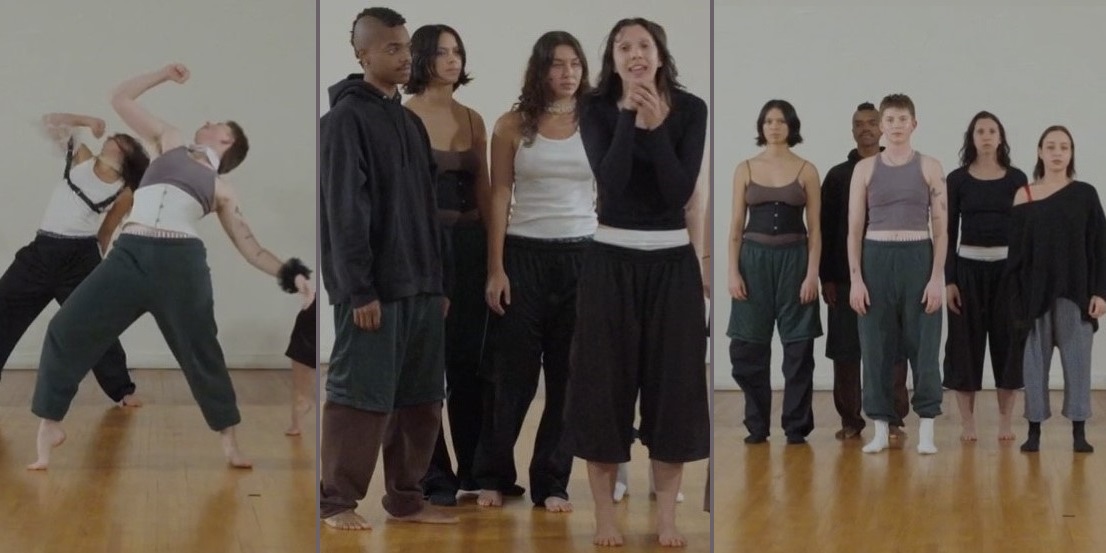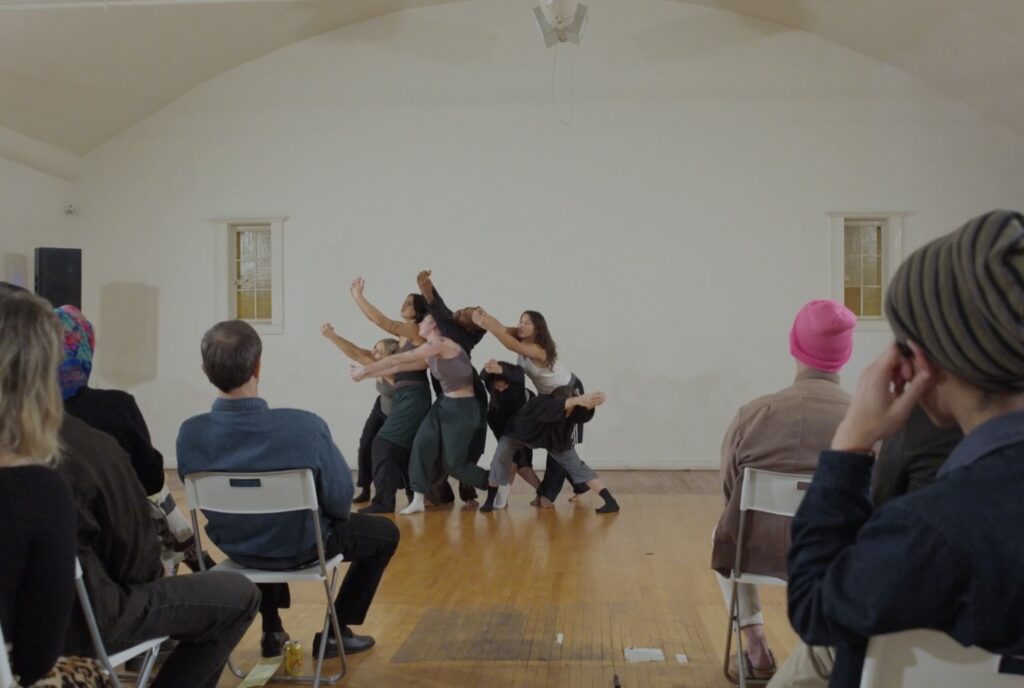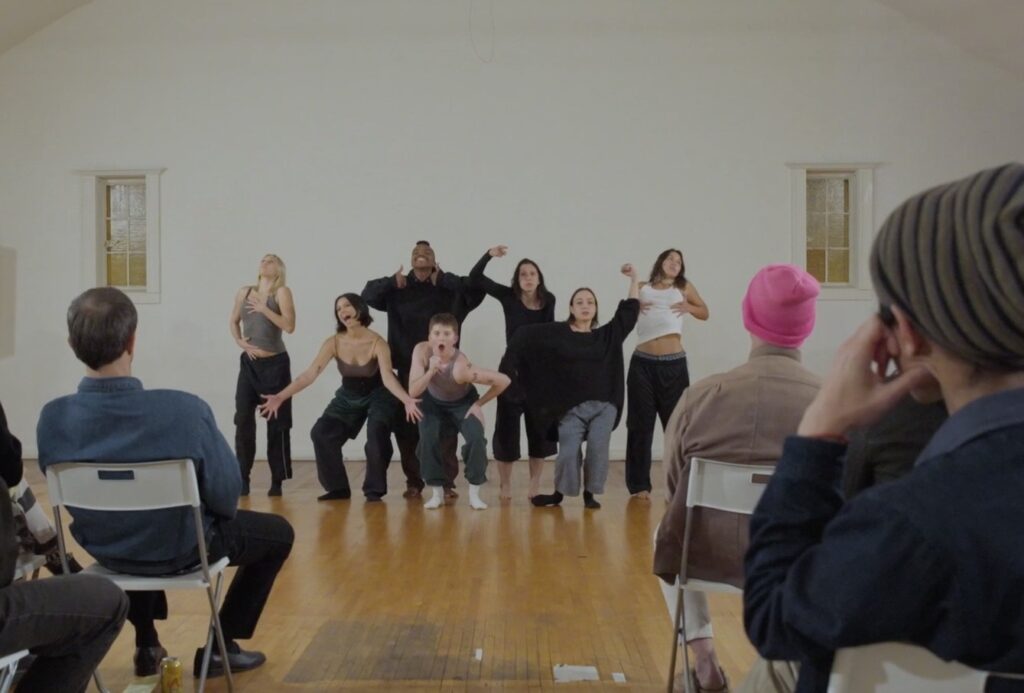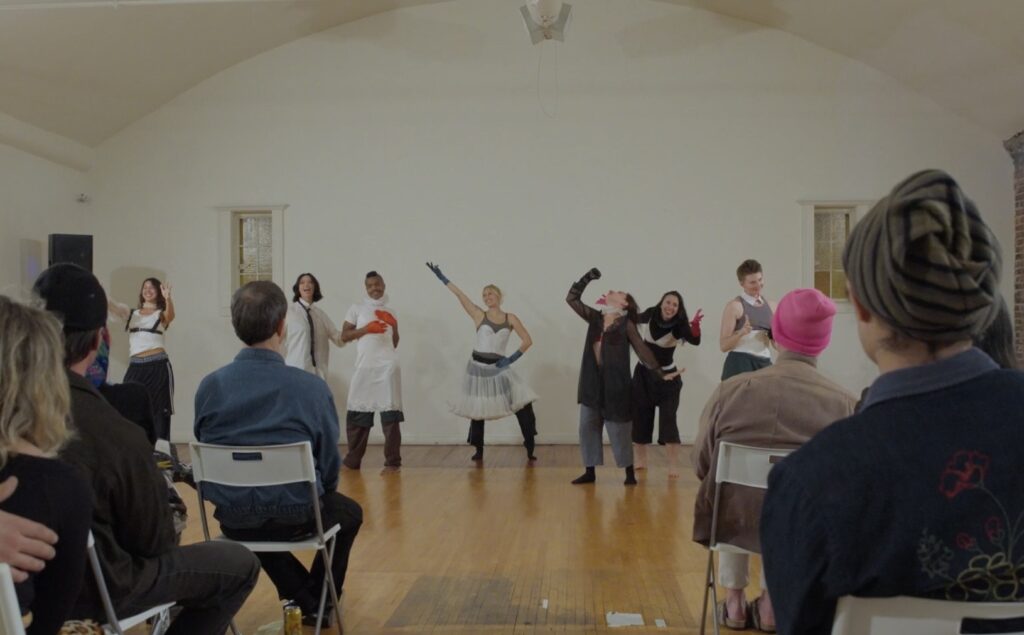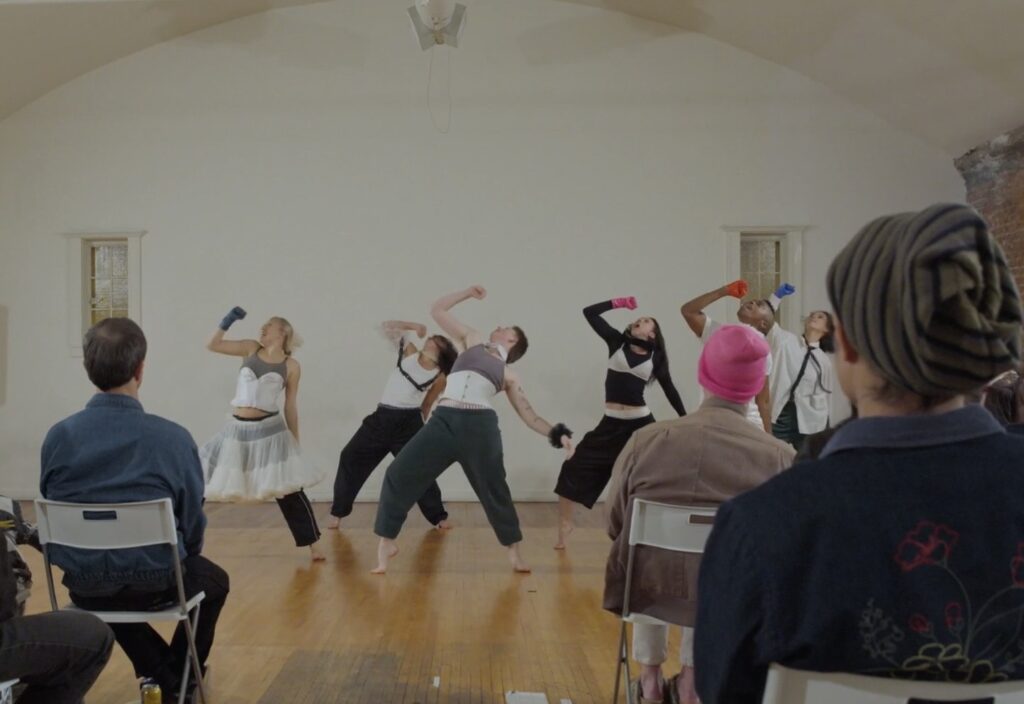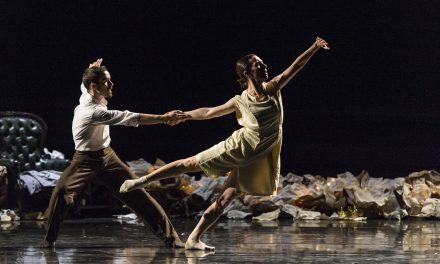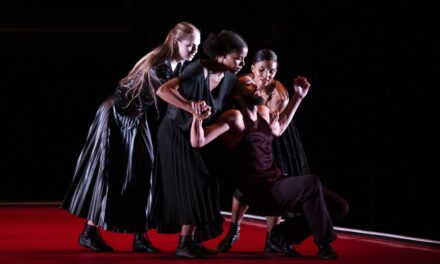“Standby lights,” Kate Wallich announces from the computer in the corner of the room. “Oh! Don’t do anything lights.”
The audience laughs.
WIP’s latest presentation of works in progress displayed both ends of the creation process. For Kate Wallich, she is still in the exploration phase of a commissioned work for Seattle Theatre Group, Liquid Music and Northrop, premiering in the 2025/2026 season. She joins Tate Justus, one of the dancers who will be part of the new large-scale performance project, to discover what is illuminating and what needs redirection (lights included). Meanwhile, TRIN — a contemporary dance theatre company led by Monica Williams, Tippy Dringman and Mason Gray — shared a portion of character research for a larger piece called “The Greatest Show on Earth.” They have a concept and grounding below their feet, and their presentation is just a taste of something with a bit more than just bones.
Rather than critique these as final works, I will reflect on what is working and translating thus far for these works in progress.
So back to the lights; It’s funny. Wallich, a co-founder of WIP LA, embraces the low-tech, high-viz aspect of the series. Before Wallich and Justus take the stage, there is a long email chain regarding the new work displayed on the back wall, askew. Wallich packs the piece with slightly absurd details that bring a chuckle or scoff. The comedy keeps the work engaging and the audience at the edge of their seat, waiting to see what this seemingly small detail could lead to.
The choreography itself feels like Wallich and Justus learning to move for the first time. They have succeeded in moving for themselves, but what happens when you must support and rely on another being? Justus approaches Wallich and touches her shoulder, slowly melding into her. It begins soft and slow, then grows into something more frantic and, at times, sexual. They roll on the floor and mesh with items scattered about. In this example, it is a foam roller. They topple over each other until they find the strength to spread apart. They are like two strong magnets navigating the push and pull.
Their relationship with the ballet barres around the space is also intriguing. Justus uses it to lift himself from the ground. Wallich folds her body over it. In a poignant moment, Wallich swings one in front of the audience (a risky action) and lifts it against the wall. After some time getting acquainted with the barre, she puts her back against the wall, hikes up her biker shorts, exposes her underwear and humps it. This triggers Justus to zoom over and collide with her. Themes of sexuality surface. What’s particularly enlightening is how exaggerated it is. If we are building upon the idea that these two are learning how to move their body, sexuality is definitely a part of it.
These provocative movements continue. But it takes a turn when Wallich wears a pair of boxer shorts on her head like a babushka. They continue to explore each other’s bodies and as she hovers over Justus, she takes the boxer and shoves it into his mouth like a gag. The act feels less sexual and more violent, bringing them to their feet. They have successfully learned to navigate each other. The movement grows quicker and more precise. This evolution of the body and sexuality works for the piece and provides moments of reflection as we witness the relationship between these two evolve. And of course, the comedy. Wallich leaves us with one last laugh: a projection of GIFs.
Trin’s “Curtain hits the cast” explores how our personalities on stage (whether literal or metaphorical) may differ from the inside. One by one, the cast (Gia Bella, Dringman, Gray, Casey Shea, Keilan Stafford, Williams and Annalise Gehling) walks in front of the audience and mimics a microphone in their hand. Some have very little to say into the mic while others share a whole conversation. In these moments, we get a glimpse into the dancers’ personalities and their characters. The voice is a great device to make this happen, and how they do it is smart. The company does not stick to the typical stream of consciousness. They also dig into internet culture to provide a look into their humor and how it shapes who they are.
“Do you wear wigs?” one dancer asks. “Have you worn wigs? Will you wear wigs? When will you wear wigs?”
The dialogue references a viral video of an interviewer asking “The Lord of the Rings” star Elijah Woods bizarre questions. In another moment, a dancer sings in cursive, a trend that developed on TikTok in recent years. The Internet references increase and switch at intense speed, ending with Victoria Justice’s viral “I think we all sing” comment. Following the reference, Williams, Dringman and Gray gather center stage and beautifully harmonize. The tone grows more serious.
Williams’ performance sticks out in “Curtain hits the cast.” She moves with an intensity in her eyes. She holds the invisible mic and stands still, taking in the audience. Her glare alters the space and transports us out of G-Son studios. Her approach to phrase work is just as immersed as you can sense her discovering new emotions within the movements she performs.
The work shifts from the flurry of voices to a soft and calm sequence in the darkness. Someone holds a flashlight to duos smoking, swaying in each other’s arms or simply being. It is cinematic and helps separate the dancers’ characters and authentic selves. The performative nature of the viral videos juxtaposes the dancer’s subtleties in the darkness.
WIP’s 13th iteration highlighted the series’ roots, bringing together works at different points of development. I left in anticipation of what was to come.
To learn more about WIP (Works In Progress), please visit their website.
To learn more about G-Son Studios, please visit their website.
Written by Steven Vargas for LA Dance Chronicle.
Featured image: WIP 013 – TRIN Dance Company – Video still by Miranda Reilly.

